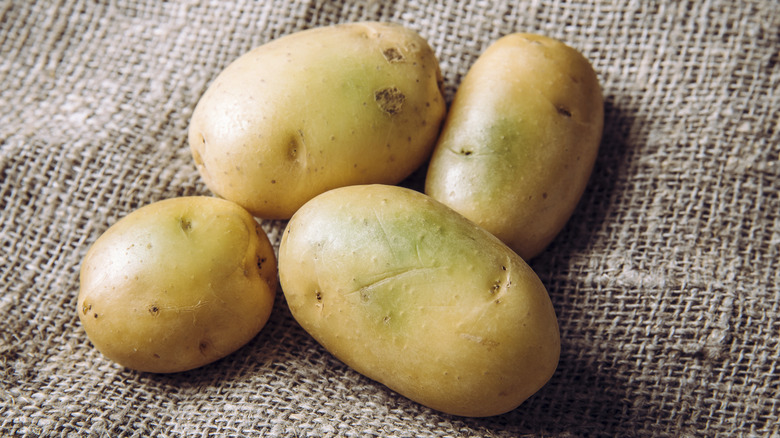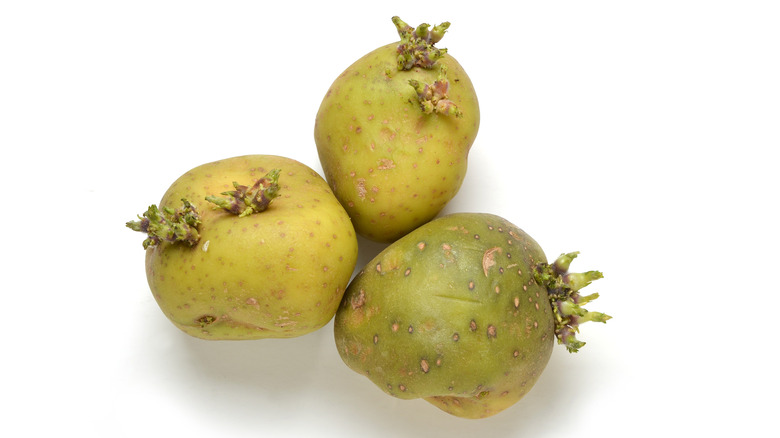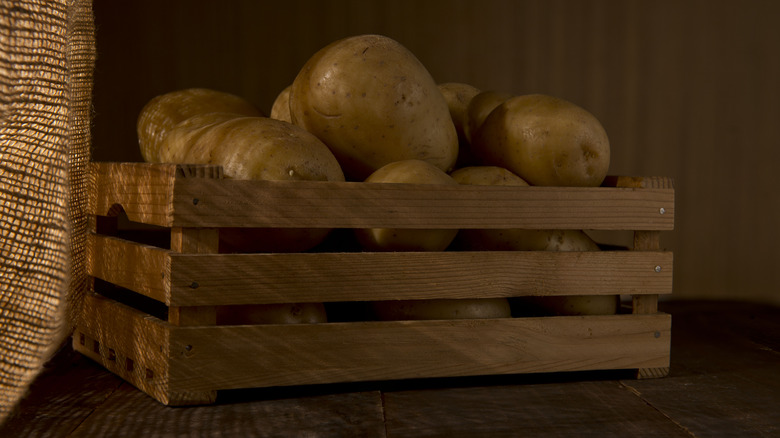Why Do Potatoes Sometimes Turn Green?
If you've ever had a bag of potatoes in your kitchen and grabbed one for a potato recipe only to find a green tinge on some of those spuds, don't panic. It's a natural and normal occurrence, and as long as you know what to do with those green parts (more on that in a moment), it's not a major concern.
The green patches are a result of photosynthesis, where the potatoes are turning light into energy. This process also causes the potato to start producing chlorophyll, which is what gives it the green color. Chlorophyll is just a pigment that's flavorless and totally safe to eat. However, when potatoes are exposed to light, they also produce another substance by the name of solanine, which can be poisonous. Solanine is actually colorless, so technically speaking, it's separate from the chlorophyll, which causes the green shading under a potato's skin. But the two go hand-in-hand: Both of them form when a potato is exposed to light, so a green potato will indicate the presence of solanine, even if the green color isn't caused by it.
But are they safe to eat?
Solanine has a bitter taste, so it may make a potato less tasty to eat. But more importantly, it's a toxin, so you'll want to avoid eating too much of a green potato to protect yourself from it. Solanine is basically a naturally-produced pesticide that protects the potato from insects and creatures that would eat it. Unfortunately, it may also protect the potato from humans — if a person eats too much solanine, they may experience symptoms like diarrhea, vomiting, fever, headaches, and abdominal pain.
Fortunately, solanine will just be concentrated in the parts of the potato that have turned green, so if it's only a smaller portion of the potato that's green, you can just peel or cut that off and use the rest of the potato as normal. If there's residual solanine in the potato, that's not a huge concern: Cooking potatoes reduces the solanine levels further. It's also generally understood that you have to eat a fairly large quantity of solanine to actually poison yourself, and cases of proper solanine poisoning are considered very rare nowadays. That said, it's a poison, so it's still wise to avoid ingesting moderate amounts of it if possible, but traces will be more or less harmless. There are measurements of how much solanine will lead to poisoning symptoms, but it's not realistic or easy for a home cook to measure the amount of solanine in a potato.
How to deal with and avoid green spots
To avoid eating excess solanine, even the USDA agrees that it's not automatically necessary to throw away entire potatoes just because of a green spot. Solanine is found close to the surface of the potato, around the skin and any sprouts, so the center of the potato is generally safer. Cutting away sprouts (which you should do even with non-green sprouted potatoes), peeling potatoes, and cutting off green sections (where solanine will be concentrated) should do the trick, although if a potato has a lot of green (as compared to just some small patches), it may be better to just throw it away.
Ideally, you can prevent potatoes from turning green in the first place by storing potatoes appropriately. This means storing them in a dark place, since exposure to light is what stokes solanine production, ideally it'll be between 45 to 50 degrees Fahrenheit, too. Solid paper bags are better than mesh bags, as they'll provide extra protection from light. If you're growing potatoes, you'll want to make sure they're sufficiently covered in soil: If they're too close to the surface, they also risk turning green.


